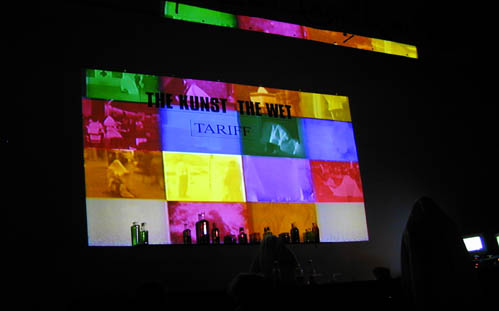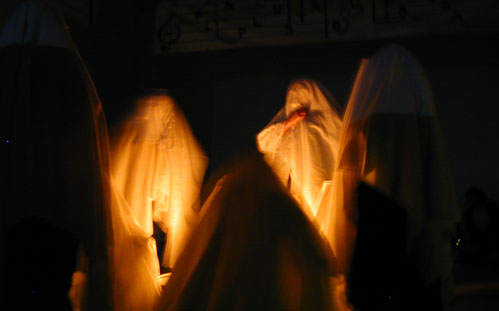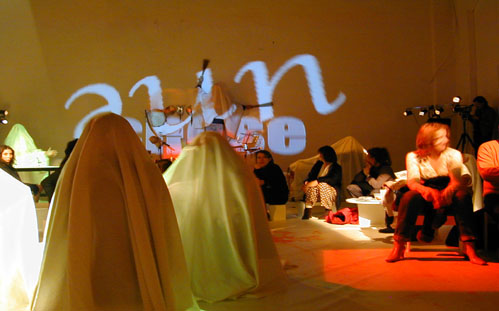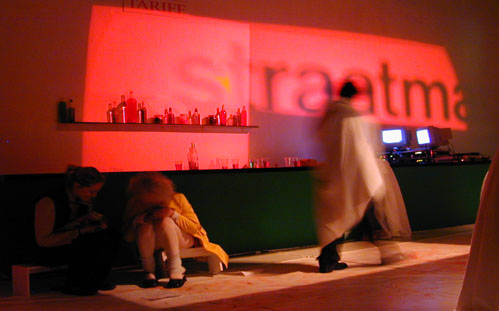Straatman Ensemble Opera
Angel VergaraWith the production of an actual opera, W139 is entering unfamiliar terrain. The project is the idea of the Brussels artist, Angel Vergara, and combines virtually all the elements and merits of his artistic oeuvre into a dynamic presentation.






Vergara more or less splits himself into bits the opera not only fuses all the figures he has created but all the media he works in (installation, performance, video, and painting).
The title of the piece Wij, de Kunstwerken, Spinoza's verjaardag (We the Artworks, Spinoza's Birthday) shows how Vergara breathes life into his protagonists. He sees them and refers to them as living works of art. The 'Straatman Ensemble Opera' is a dazzling amalgam of theatre, music, literature, performance and visual art. The structure of the piece raises interesting questions: is it an installation with a live performance as centrepiece, is it a three-week performance and what does opera mean in this day and age?
It is clear that the W139 rear space will serve as the environment for the project for 6 weeks; 3 for installing and rehearsing followed by presenting the work in its entirety to the public over 2 evenings, after which it can be viewed for 3 weeks. This way, the opera responds to the engagement W139 aims to offer artists: resources, scope expertise.
Vergara based his plans for the opera on Spinoza's Ethics, from which he distilled nine propositions. There are also connotations with the work of key figures from Classic modern culture theatre writer Robert Filiou and composer Erik Satie. Vergara re-worked Filiou's theatre text 'Anniversaire de la Mouette'. The play has minimal scenery. An artist waits for people to visit his studio, but nobody comes. Vergara recognises in this the confrontation of reflecting on your work as you wait for visitors. The (empty) timespan inspired Vergara to create an opera.
He chose and re-worked 9 pieces composed by Erik Satie (that reflect Spinoza's theories) which were then re-written by composer Jean-Luc Plouvier to produce a score. This process gradually resulted in all the elements of the opera. Actors, musicians and singers then make their own contributions. The presentation has completely done away with the distinction between stage and theatre. The actors move freely among the public whose voluntary or involuntary reactions become part of the opera.
Vergara has been working with his alter ego Straatman; for many years. On many occasions, the persona, concealed under a white sheet, drew the landscape around him. The apparition appeared at art exhibitions (Venice, Muhka, S.M.A.K.) and on city streets. Recently, Straatman also appeared in the guise of Albert, King of the Belgians or of a Flemish Black.
Now Straatman is no longer alone. Vergara has divided his character up among a cast of street men and women. The public enters a space decked out like a nightclub, and is lost in the night world of Street Men and Street Women. They tell stories and sing about their lives, about the news of the day and give their offerings on aesthetics and politics. Spinoza runs the club, a weird space in the city's Art and Law district. Artworks speak and Spinoza sings! With: Eddy Embsen, Bart van den Ende, Chris Factor44, Gerald Fenerberg, Christian Genet, Gerard le Gerard, Renee Heeringa, Jean-Francois Jacob, Solange Labbe, Carlos Montalvo, Jean Luc Plouvier, Jose Vergara, Luis Vergara, Cora van der Voort, Inbal Yalon, Nathalie Yalon, A production of the Straatman Ensemble and W139.
Designpolitie made a physical invitation for this show, a part of the series of invitations for W139 that year that appeared throughout Amsterdam.
Met dank aan
OA STUK-Leuven, de Vereniging voor tentoonstellingen van het Paleis voor Schone Kunsten, Brussel, Marc Philippe, Dijano. Prod. BXL., de Brakke Grond*Vlaamse Cultuurhuis, de Mondriaan Stichting en de Gemeente Amsterdam.